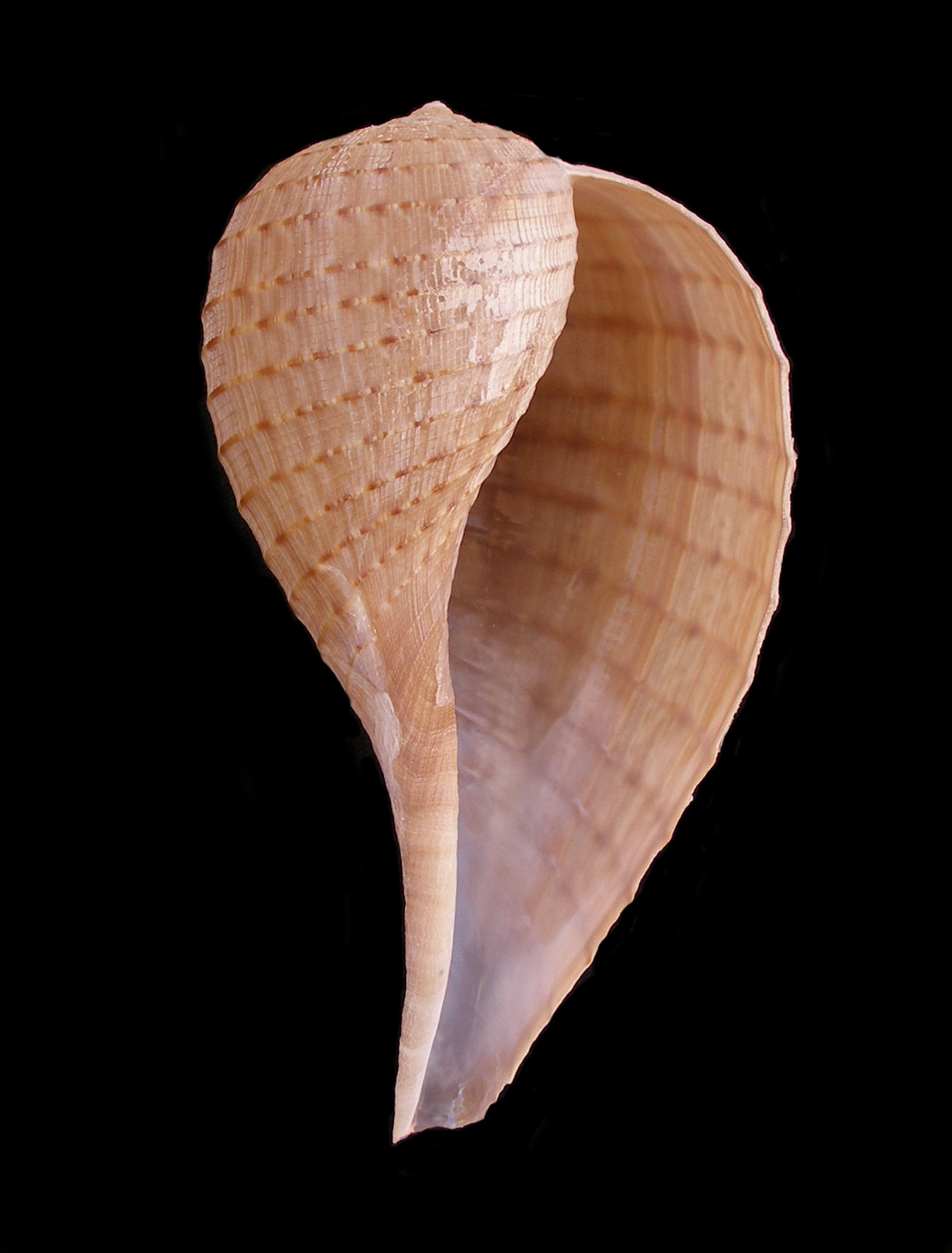Fig Shell of the Ficidae Family
One Fig Shell of the Ficidae Family can be found in this website:
 Panamic Fig Shell, Ficus ventricosa. A representative of the Ficidae Family of Fig Shells.
Panamic Fig Shell, Ficus ventricosa. A representative of the Ficidae Family of Fig Shells.
Fig Shells of the Ficidae Family are gracefully curving thin but strong shells that are shaped like an elongate fig or pear. The shell is almost all body whorl and the spire is extremely low, not extending above the body whorl. The aperture is large and the siphon canal is long. They have external sculpting consists of fine spiral and concentric lines. They have a large mantle that extends over the shell and they do not have an operculum.
Fig Shells glide along the bottom on a large foot, over sand, mud, or silt substrate in shallow to moderately shallow waters to depths up to 2,900 m (9,500 feet). They feed on detritus that has settled to the bottom. In turn they are preyed upon by crabs, fish, mollusks and sea stars. Fig Shells are found in tropical and subtropical waters. There are ten species in the Ficidae Family and only one is found in coastal waters along the Baja Peninsula.